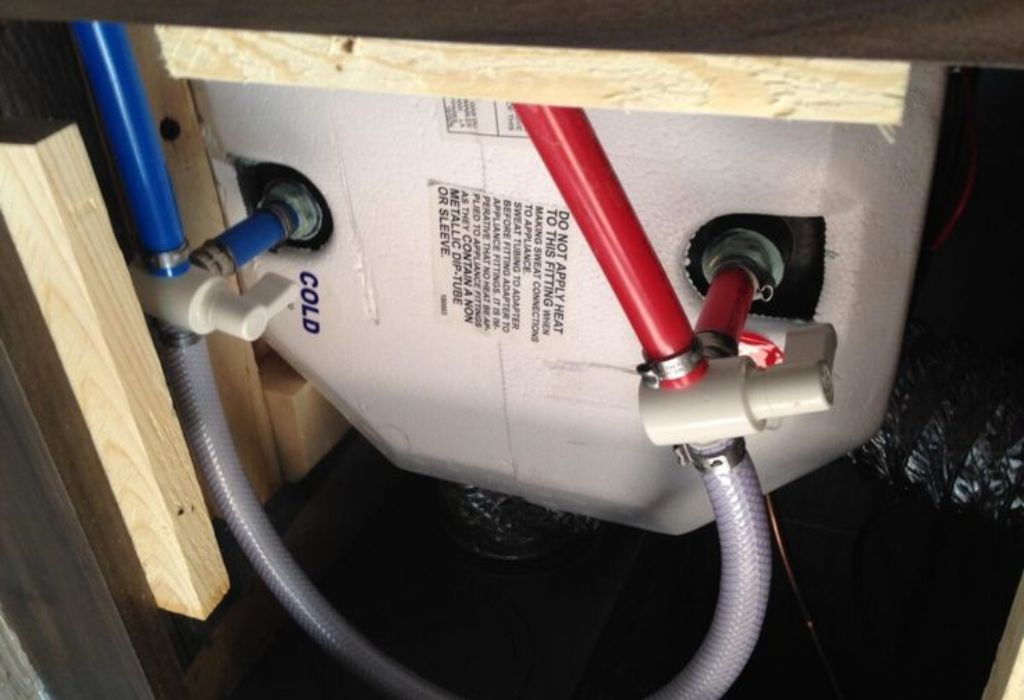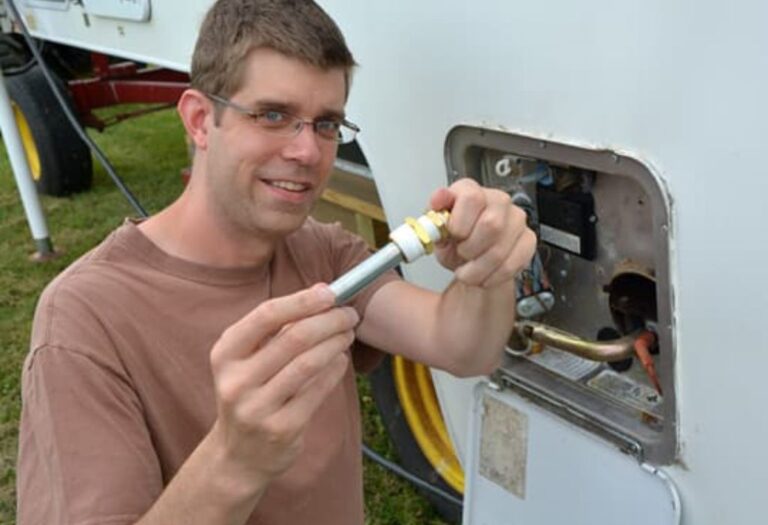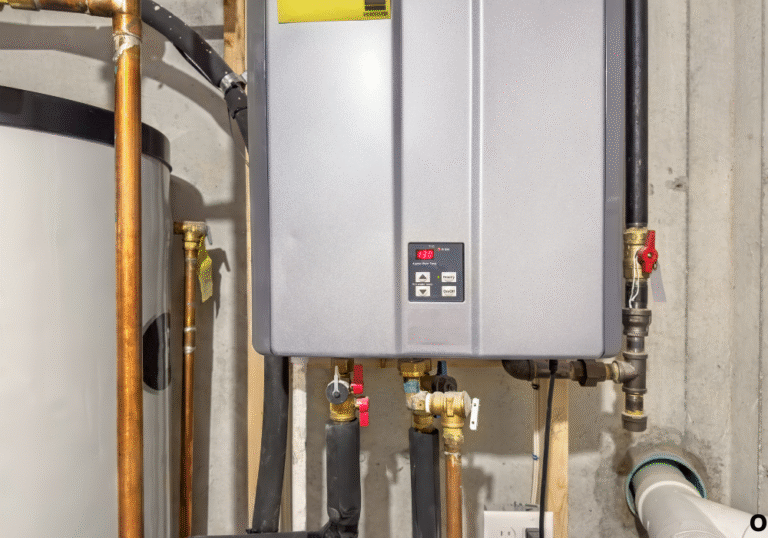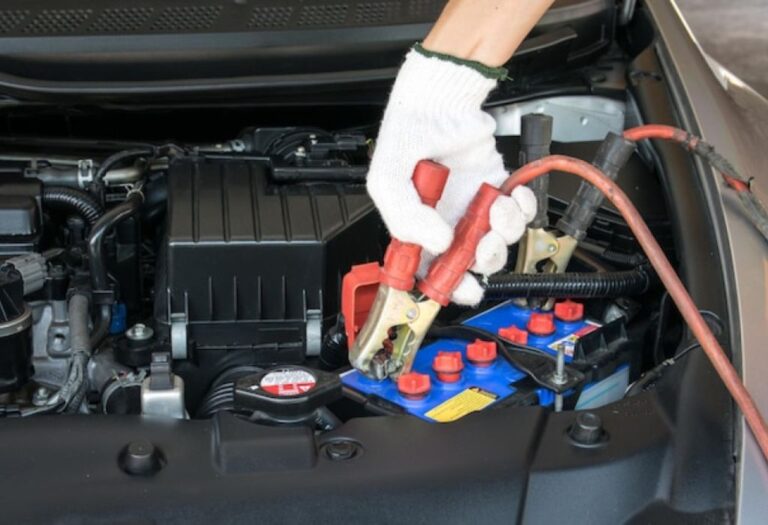How to Turn On Hot Water Heater in RV Safely and Fast
Imagine arriving at your campsite after a long drive, ready for a relaxing shower, only to find the water running ice-cold.
For many RV owners, this frustrating surprise happens simply because the hot water heater wasn’t turned on correctly. It’s one of the most common issues for beginners, and it can instantly disrupt the comfort of your entire trip.
An RV’s water heater is one of its most essential systems, yet it’s often misunderstood. Many owners assume it operates automatically, but knowing exactly how to turn on hot water heater in RV is what separates a stress-free journey from a cold, inconvenient one.
Without the right sequence, a heater can fail to ignite, trip a breaker, or even get damaged due to an empty tank.
According to maintenance data, a large percentage of RV hot water problems come from simple setup mistakes like leaving the bypass valve open or forgetting to fill the tank before powering on.
In fact, over 60% of new RV owners report issues with heating systems during their first season of use.
Learning the correct process not only ensures reliable hot water but also extends the life of your heater and saves on costly repairs. With proper startup steps, you can have hot water ready within minutes using propane, electric, or dual-power systems.
What It Means to Turn On Hot Water Heater in RV

Turning on a hot water heater in an RV may seem as simple as flipping a switch, but it involves more than that.
It’s a combination of preparation, system awareness, and safety checks to make sure water flows correctly, the tank is full, and the power source is selected properly.
Skipping even one small step can cause the heater to malfunction or overheat, leading to damage or safety risks.
When learning how to turn on hot water heater in RV, it’s important to understand that the process depends on your heater type. Traditional RVs often use tank-style heaters powered by propane, electricity, or both.
Modern models may include tankless on-demand systems that activate only when a hot water faucet is opened. Each system has a slightly different startup method, but the underlying principles of safety and water flow remain the same.
Before activating your heater, confirm that the tank or water lines are full. Operating a dry heater can burn out the heating element or warp internal parts. Check that the bypass valve is set correctly, ensuring water can circulate through the tank.
Once confirmed, you can safely switch the heater to either propane or electric mode based on your available power source.
What does “turning on” the hot water heater actually mean?
It means enabling power or ignition while ensuring the tank has water for safe operation.
Why is water level important before startup?
Running a dry heater can damage internal components and reduce efficiency.
Are there different types of RV water heaters?
Yes. Most are propane, electric, or hybrid systems, while newer RVs may have tankless heaters.
Does the bypass valve affect performance?
Yes. If it’s in the wrong position, water may not flow into the tank, preventing heating.
Can you turn on both propane and electric at the same time?
Yes. Dual-mode or “quick recovery” setups allow faster heating using both power sources.
Why Safe and Fast Startup Matters for RV Owners
Knowing how to turn on hot water heater in RV safely isn’t just about convenience—it’s about protecting one of the most critical systems in your vehicle.
When activated incorrectly, the heater can overheat, trigger safety shutoffs, or even cause irreversible damage to its internal components.
A simple mistake like powering on an empty tank can burn out the heating element within minutes.
Beyond mechanical risks, an improperly started water heater can pose safety concerns. A malfunctioning propane ignition can lead to gas buildup, while electrical misfires can trip breakers or overheat wiring.
Proper startup procedures ensure the system operates efficiently without endangering your RV or your comfort.
Efficiency also plays a key role. When the heater runs as intended, it uses less propane or electricity, saving energy during extended stays or off-grid trips.
According to RV maintenance experts, correct heater operation can reduce power consumption by up to 20% and extend the lifespan of the heating element. This means fewer repairs and better performance in the long run.
What happens if you turn on the heater with no water inside?
The heating element can burn out or the tank can warp from extreme heat.
Can improper startup affect propane safety?
Yes. Failing to ignite properly can allow excess gas buildup inside the burner area.
Does using both electric and propane help?
Yes. Using both in “quick recovery” mode heats water faster while maintaining balance between energy sources.
Can incorrect settings damage internal components?
Absolutely. Wrong bypass valve or thermostat configurations can restrict water flow and cause overheating.
Is a fast startup also a safe startup?
Yes—if all safety checks are done first, speed and safety can work hand in hand.
Step-by-Step: How to Turn On Hot Water Heater in RV Safely and Fast
Activating your RV’s water heater is simple when done correctly, but skipping a step can lead to cold water, system damage, or worse—safety hazards. Whether your heater runs on propane, electricity, or both, this process ensures a quick and safe startup every time.
Step 1 – Check Water Supply and Tank Fill
Before powering on, make sure your RV’s fresh-water tank or city water connection is active. Open a hot water faucet for several seconds until water flows steadily without sputtering. This confirms the heater tank is full and air has been purged from the system.
Why check the water supply first?
Because turning on a dry tank can burn out the heating element within minutes.
How do you know the tank is full?
When a consistent stream of water flows from the hot faucet with no air spurts.
What if the water pressure is weak?
Inspect for closed valves or low tank levels before heating begins.
Does bypass valve position matter?
Yes. If set for winterization, water won’t enter the heater, preventing proper operation.
Can you heat while using city water?
Yes. City hookups are ideal for steady water flow and consistent pressure.
Step 2 – Select Power Mode (Propane, Electric, or Both)
Locate your RV’s water heater control panel, usually inside near the kitchen or bathroom. Choose between propane (LP), electric, or both depending on your setup. Dual-mode or “quick recovery” allows faster heating using both power sources.
When should you use propane mode?
Propane is best when camping off-grid without access to shore power.
When is electric mode better?
Use electric when plugged into a power source to conserve propane.
Can both modes run together?
Yes. This combination shortens heating time and maintains temperature more efficiently.
What precautions should be taken before switching modes?
Verify both power sources are available and breakers are in working condition.
Do tankless heaters require a mode selection?
No. They heat automatically when a hot water tap is opened.
Step 3 – Activate the System
Once you’ve selected the mode, flip the heater switch to “ON.” For propane heaters, listen for the ignition click as the flame lights inside the combustion chamber. Electric heaters silently activate and may take up to 20 minutes to produce hot water.
How long before hot water appears?
Typically 10–20 minutes, depending on water temperature and heater size.
What if there’s no ignition sound?
Check your propane tank, fuses, and power switch for proper connection.
Should the switch stay on all the time?
Yes, if you’re using hot water frequently. Turn it off when storing the RV or winterizing.
What temperature should be maintained?
Keep around 120°F for optimal comfort and energy efficiency.
Is it normal for the heater to cycle on and off?
Yes. The thermostat regulates the temperature by cycling automatically.
Step 4 – Monitor and Test the Hot Water Flow
After activation, wait several minutes, then open a hot faucet to test temperature and pressure. The water should warm gradually and flow steadily. Listen for irregular noises or clicking—these could signal air bubbles or a minor ignition delay.
Why test the flow immediately?
It confirms the heater is functioning and water is circulating properly.
What if the water is only lukewarm?
Check if you’re running on electric mode only; propane heats faster in cold weather.
Can low pressure affect heating time?
Yes. Reduced water pressure limits flow and can delay heating cycles.
Is a small popping sound normal?
Yes. It usually indicates trapped air or minor sediment buildup inside the tank.
Should the heater run continuously?
No. Once the water reaches set temperature, it cycles off automatically.
Step 5 – Troubleshoot Common Startup Problems
If the water remains cold, recheck your setup before assuming a malfunction. Ensure water is entering the tank, the bypass valve is open, and power is active. A faint propane smell may indicate ignition failure—turn everything off and inspect safely before restarting.
What causes no hot water even after startup?
An empty tank, faulty bypass valve, tripped breaker, or ignition issue.
What if the pilot light won’t stay lit?
A bad thermocouple or weak propane supply could be the reason.
Why does water heat too slowly?
Sediment buildup or a failing heating element may reduce efficiency.
Is frequent cycling normal?
Yes, but rapid on-off cycling could mean thermostat miscalibration.
When should professional service be called?
If leaks, constant flame-out, or electrical faults occur repeatedly.
Alternative Configurations and When to Use Them
Not all RV water heaters operate the same way. Understanding the different configurations helps you choose the right startup method for your specific setup and environment.
Whether you’re using a traditional tank heater, a tankless system, or a hybrid dual-power model, each has unique advantages and maintenance requirements.
Tank-Style Water Heaters are the most common and can run on propane, electricity, or both. They store heated water inside a small tank, typically 6 to 10 gallons. These heaters are reliable and easy to maintain but require time to reheat water once it’s used up.
Tankless (On-Demand) Water Heaters heat water only when a hot faucet is turned on. They’re energy-efficient and ideal for continuous use but depend heavily on stable water pressure and consistent power or propane supply. Some models also require a minimum flow rate to activate heating.
Dual-Source or “Quick Recovery” Systems combine electric and propane heating for faster results. These systems are great for larger families or cold-weather camping since they can maintain hot water even when usage is high.
Which type of water heater is most efficient for RVs?
Tankless systems are the most energy-efficient since they heat water only when needed.
Can a tankless water heater be used in all weather?
Yes, but extremely low temperatures can affect performance unless insulated or heated.
Do tank models need more maintenance?
Yes. Sediment buildup and anode rod wear are common issues that require periodic checks.
What’s the benefit of a dual-source system?
It offers faster heat recovery and flexibility when one power source is unavailable.
Are hybrid systems harder to operate?
Not at all. They use the same controls—just select both power modes for faster heating.
Best Practices and Maintenance for Long-Term Performance

Keeping your RV’s water heater in excellent condition is just as important as knowing how to turn it on correctly.
Regular maintenance not only prevents breakdowns but also ensures consistent hot water and extends the life of the heating components.
Neglecting routine checks can lead to issues like sediment buildup, corrosion, or reduced heating efficiency.
Start by flushing your water heater at least once or twice a year. This removes mineral deposits and debris that accumulate inside the tank, which can cause uneven heating or loud popping noises during operation. If your RV uses hard water frequently, more frequent flushing may be necessary.
Inspect the anode rod (for tank-style heaters) every six months. This small but vital component attracts corrosion, protecting the inner tank from rusting.
Replace it when more than 75% of the rod is eroded. Always ensure the power is off and the water has cooled before starting any maintenance work.
Check the temperature and pressure (T&P) relief valve periodically. Lift the valve’s lever briefly to confirm that water flows freely from the discharge pipe. If it sticks or leaks continuously, replace it immediately to prevent overpressure accidents.
How often should the tank be flushed?
Every 6–12 months, depending on usage and water quality.
Why is the anode rod so important?
It prevents internal rusting by attracting corrosive minerals away from the tank’s metal walls.
Should the bypass valve be adjusted after maintenance?
Yes. Set it back to normal operation to allow water flow through the heater.
Can you leave the water heater on continuously?
Yes, if you’re using the RV regularly, but turn it off when storing or winterizing.
What’s the ideal water temperature for RV heaters?
Around 120°F to balance comfort, energy efficiency, and safety.
Conclusion
Understanding how to turn on hot water heater in RV safely and correctly ensures comfort, convenience, and system longevity on every trip.
A properly started water heater not only provides instant hot water but also prevents costly issues like burned-out elements, propane leaks, or pressure damage caused by improper setup.
Taking a few extra minutes to confirm that the tank is full, the bypass valve is open, and the correct power mode is selected can make all the difference.
These small steps guarantee that your heater functions efficiently, whether you’re plugged into shore power or running on propane during off-grid camping.
Regular maintenance—like flushing the tank, checking the anode rod, and inspecting the temperature and pressure valve—keeps the system operating smoothly year after year. It also ensures your RV water heater remains safe, energy-efficient, and ready whenever you need it.
Hot water isn’t just a luxury in your RV—it’s a sign that your systems are working exactly as they should. By following these expert steps, you’ll always have reliable hot water on demand, no matter where your adventures take you.
I’m David R. Coleman, the founder, lead writer, and lifelong tool enthusiast behind GarageToolPro.com. With years of experience in automotive repair, woodworking, and home DIY projects, I created this platform to share practical tips, detailed tool reviews, and step-by-step guides that help mechanics, hobbyists, and homeowners get the job done right the first time.






